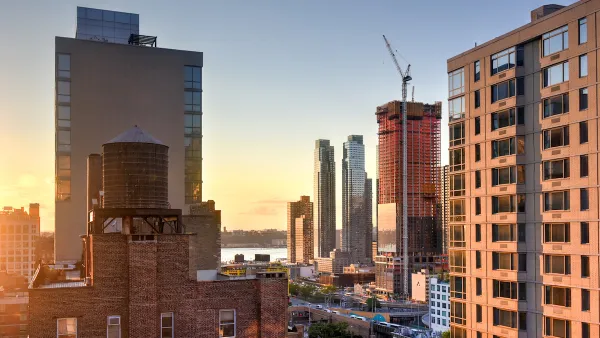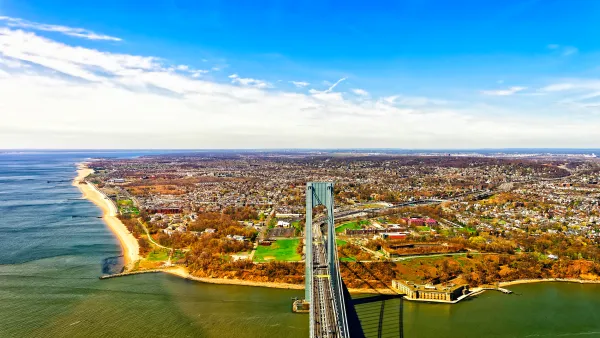With average rents $2,800 more than the rest of the country, and the average home costing $1.46 million, it's increasingly difficult for the non-wealthy to live in Manhattan. Amy O'Leary goes in search of the borough's vanishing middle class.
"In a city like New York, where everything is superlative, who exactly is middle class? What kind of salary are we talking about? Where does a middle-class person live? And could the relentless rise in real estate prices push the middle class to extinction?"
These are the questions that drive O'Leary in her search for what defines "middle class" among Manhattan's 1.6 million residents, in what is "probably the only place in the United States where a $5.5 million condo with a teak closet and mother-of-pearl wall tile shares a block with a public housing project."
"The average Manhattan apartment, at $3,973 a month, costs almost $2,800 more than the average rental nationwide. The average sale price of a home in Manhattan last year was $1.46 million, according to a recent Douglas Elliman report, while the average sale price for a new home in the United States was just under $230,000. The middle class makes up a smaller proportion of the population in New York than elsewhere in the nation."
"And yet the middle class stubbornly hangs on," says O'Leary, "trading economic pain for the emotional gain of hot restaurants, the and the feeling of being in the center of everything. The price tag for life’s basic necessities — everything from milk to haircuts to to electricity, and especially housing — is more than twice the national average."
O'Leary considers the definition of “middle class” through five different lenses: Income, Profession, Household Size, Length of Residence, and Values.
FULL STORY: What Is Middle Class in Manhattan?

National Parks Layoffs Will Cause Communities to Lose Billions
Thousands of essential park workers were laid off this week, just before the busy spring break season.

Retro-silient?: America’s First “Eco-burb,” The Woodlands Turns 50
A master-planned community north of Houston offers lessons on green infrastructure and resilient design, but falls short of its founder’s lofty affordability and walkability goals.

Delivering for America Plan Will Downgrade Mail Service in at Least 49.5 Percent of Zip Codes
Republican and Democrat lawmakers criticize the plan for its disproportionate negative impact on rural communities.

Test News Post 1
This is a summary

Test News Headline 46
Test for the image on the front page.

Balancing Bombs and Butterflies: How the National Guard Protects a Rare Species
The National Guard at Fort Indiantown Gap uses GIS technology and land management strategies to balance military training with conservation efforts, ensuring the survival of the rare eastern regal fritillary butterfly.
Urban Design for Planners 1: Software Tools
This six-course series explores essential urban design concepts using open source software and equips planners with the tools they need to participate fully in the urban design process.
Planning for Universal Design
Learn the tools for implementing Universal Design in planning regulations.
EMC Planning Group, Inc.
Planetizen
Planetizen
Mpact (formerly Rail~Volution)
Great Falls Development Authority, Inc.
HUDs Office of Policy Development and Research
NYU Wagner Graduate School of Public Service





























